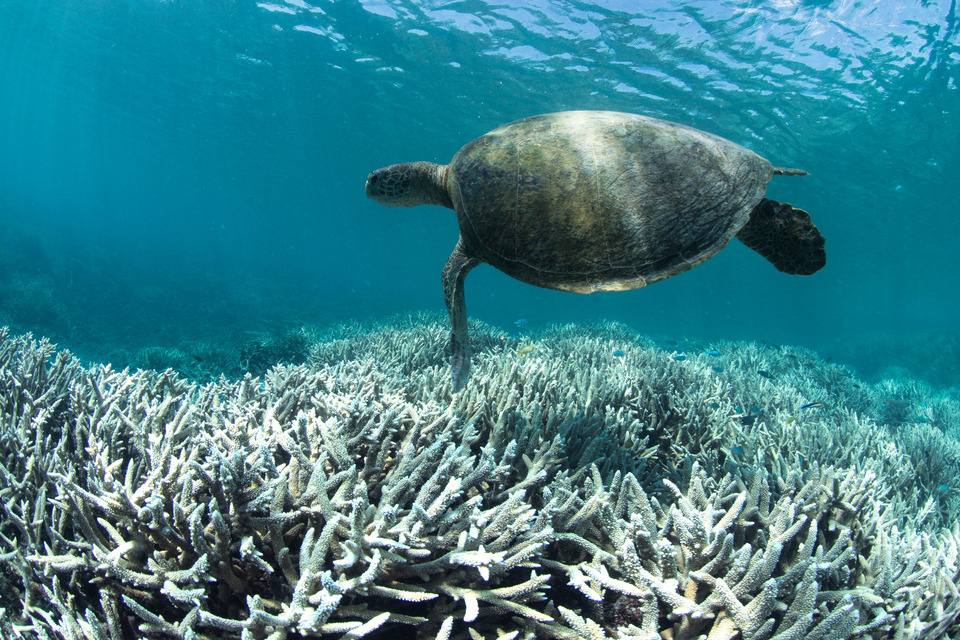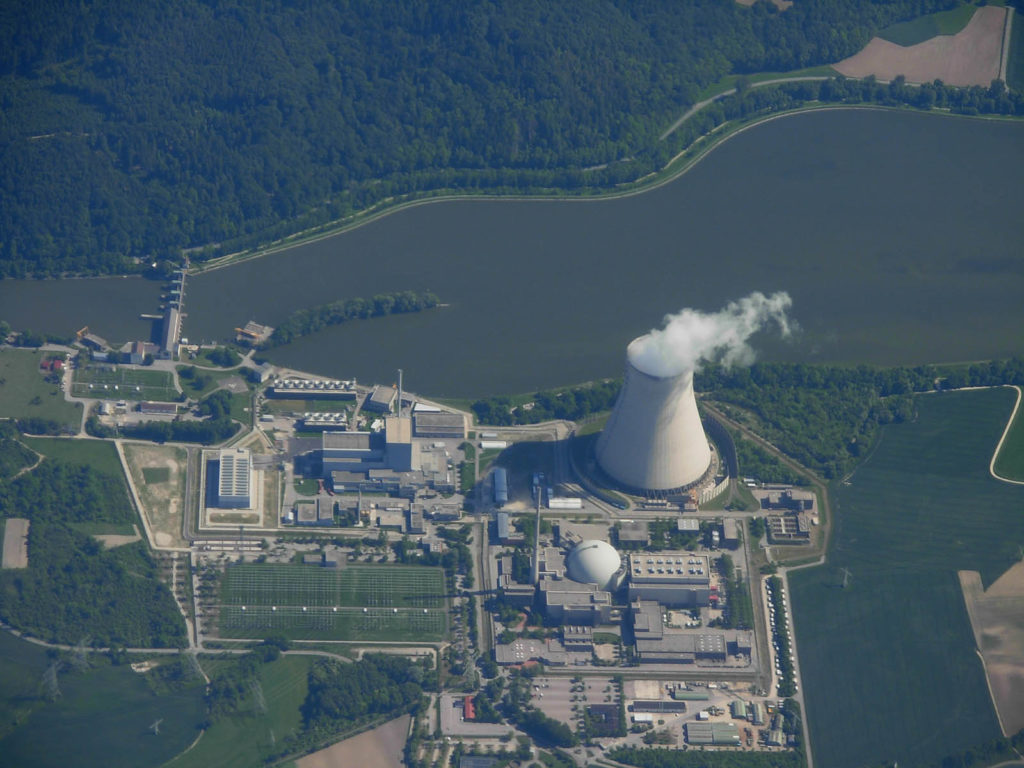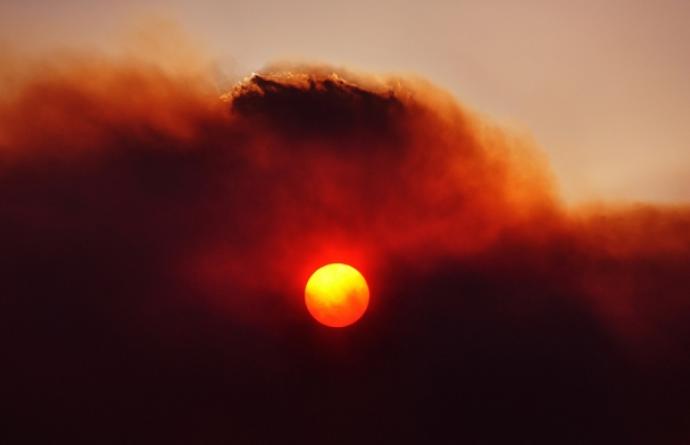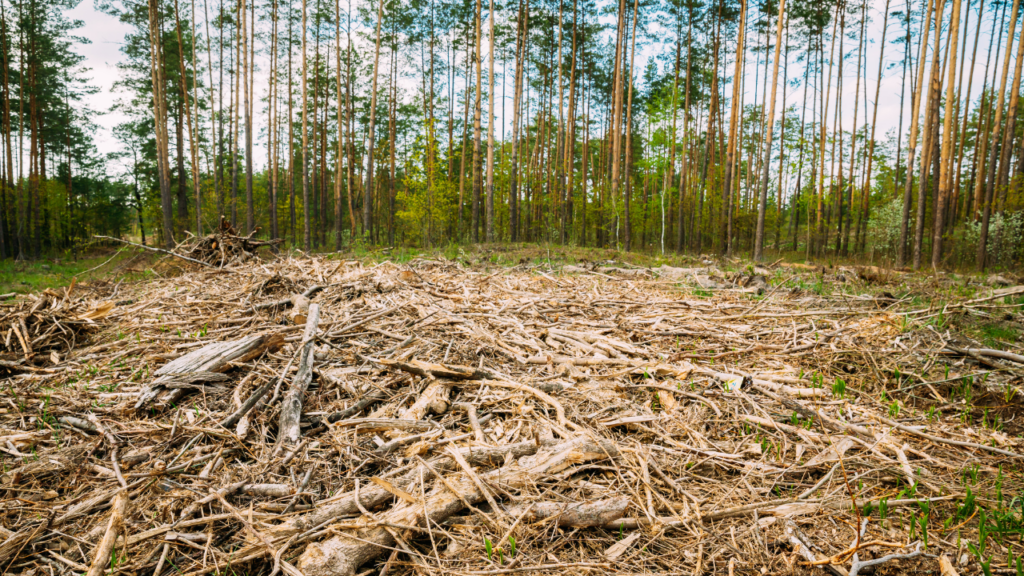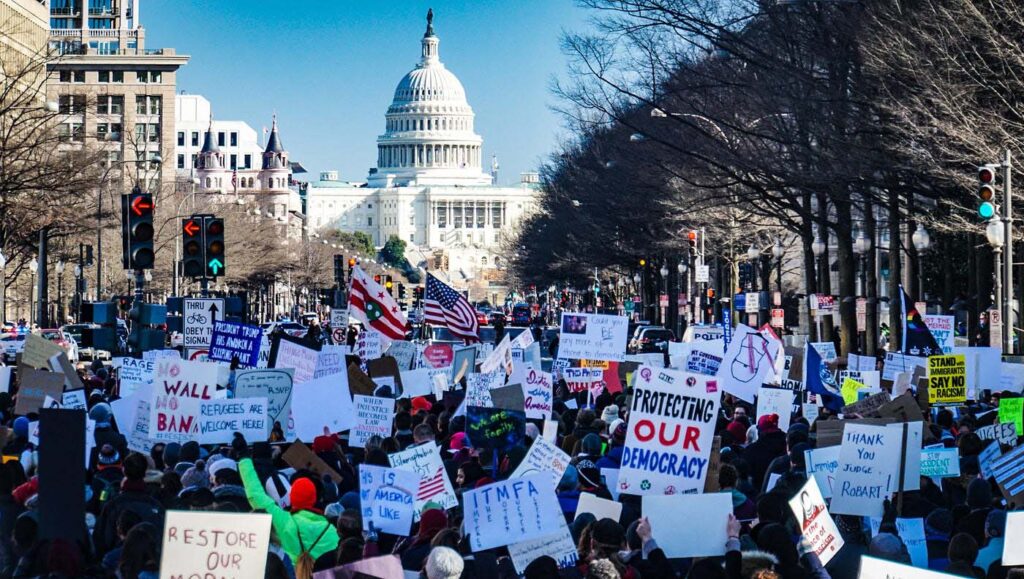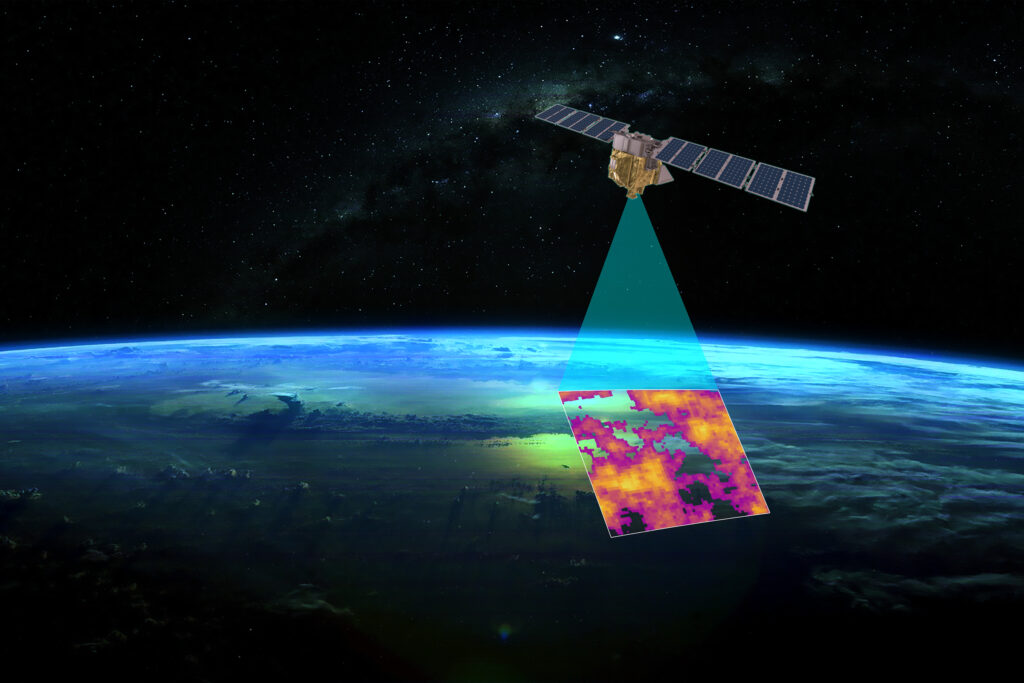Today I dived the Great Barrier Reef. The lemon sharks came to say hello and about twenty eagle rays glided by, each one with their unique and beautiful patterns. Fish glittered in the shallows, and I saw my first turtle hatchling swimming out to sea.
There is truly nothing like submerging yourself in one of the seven natural wonders of the world. But what usually brightens my day, now also brings a heavy dose of climate anxiety – and I know I’m not alone in how I feel.

The coral bleaching event that is currently unfolding on the Great Barrier Reef is a lot to process. Officially declared a mass bleaching event by the Marine Park Authority in early March, it is the 5th event since 2016 and will likely have flow-on effects for the months to come. In some parts of the Reef, above average water temperatures have been accumulating for over 11-weeks causing many coral species to pale, fluoresce and bleach – all signs of severe heat stress. Some areas are already showing signs of mortality. If it doesn’t cool down soon, many more will follow.
But this apocalyptic story you’ve heard before – the potential demise of the only living structure you can see from space.
The story you haven’t heard is ours.
Right now, thousands of divers, marine guides, and tourism operators are in the water every day witnessing first-hand what is happening. And what it’s like on the ground is far more complex than anything you’ll hear online.
For us, this bleaching event is not just a moment in the media, this is our lives. We’ve been anticipating it and watching it slowly develop for weeks. We’ve been having difficult conversations with visitors. This is not our first rodeo. Every time summer comes round, we all cross our fingers and pray that the water doesn’t stay too hot for too long. Sometimes we get lucky, and sometimes we don’t. Different parts of the Reef are affected differently.
As the eyes and ears in the water, we can tell you exactly what is going on, where and when. Which means we can also tell you just how much wonder and beauty there is to save, an important piece of the puzzle that never makes headlines.
The bleaching event doesn’t just affect the reef, it affects the people and communities that depend on it. Which means how it’s talked about affects us too. The public response to coral bleaching is often, like our response to most climate impacts, reactive. When the news breaks it’s either used to paint a morbid picture of the Great Barrier Reef, or it’s doused in head-in-the-sand optimism that everything will be okay. But the reality is there is an incredibly beautiful, sad and complex story in between. The trick is learning how to tell it.
A few years ago, I left the tourism industry and have since been on an academic quest to figure out how to tell the story of the Great Barrier Reef in a way that makes a difference. I have surveyed and interviewed thousands of visitors, guides, tourism operators and people across Australia to understand the most effective messages to motivate widespread action on climate change.
I have learned that saying the Reef is “dying” makes those in tourism fear for their jobs and makes Australians feel like they are unable to help. I have learned that saying the Reef is resilient can undermine the urgency for action, and that there is confusion among the public about whether it is alive or not. What I have really learned is that there is no perfect message, but there are a few key ingredients –
magic, grief, and a collective call to action. People need to feel there is something worth saving and that together we can – a message we can vouch for.
Many tourism operators are already working hard to nurture their sites and the industry is making plans for decarbonisation. But it might mean little if governments and big industries don’t do more to transition away from fossil fuels and give our Reef the chance to recover. The Reef is literally giving us glowing warning signs – it’s time to put an end to this polluting path we are on. And we can all do more to help.
For the over 64,000 people who work on the Reef, the Reef is not just a source of income, it’s everything. It’s our playground, our community, our culture, and our home. We love the Reef, and each time it bleaches we feel it in our bones.
So yes, use this bleaching event as a reminder that the situation is urgent. Use it to fight for more ambitious climate policies. That means saying ‘no’ to new fossil fuel projects and ‘yes’ to higher emission reduction targets. But don’t forget about the people who live and breathe the Reef every day. We are part of the story too
Yolanda Waters, Founder – Divers for Climate
Yolanda is a dive instructor turned marine social scientist at the University of Queensland and Founder of community-led initiative Divers for Climate. She has completed a PhD in climate change communication which explores the diverse connections between people and iconic places like the Great Barrier Reef (GBR), and the extent to which the GBR and GBR tourism can help strengthen public engagement with climate change. Yolanda has surveyed and interviewed thousands of Australians, including tourism operators and visitors across the Great Barrier Reef, about their perceptions of climate threats and actions, discovering that the GBR is a powerful tool to motivate complex conversations around climate action. Divers for Climate and the Undertow Media are currently producing a film that captures stories across the Australian dive community who are currently witnessing the impacts of climate change firsthand, including the coral bleaching event currently unfolding on the Great Barrier Reef.

